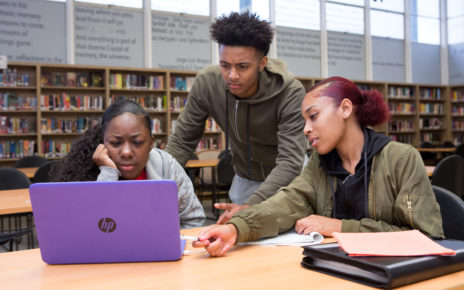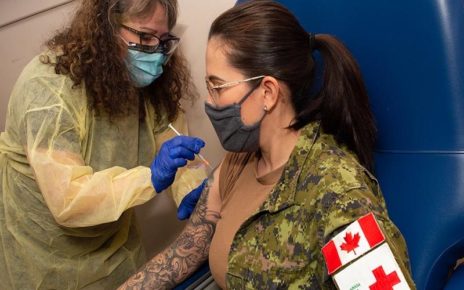Disasters and emergencies are some of the world’s most extraordinary events – they can lead to devastation, loss of property or livelihood, and death. Chernobyl, Hurricane Maria, and the Haiti Earthquake are all examples of disaster events that have forever altered individual lives and tested governments’ crisis management capacity. As global temperatures continue to increase, there is a distinct possibility that this will directly impact future disaster events: storms and droughts will likely increase in intensity. Therefore, having an educated public armed with facts about disasters and emergencies is more important now than ever.
Disasters and emergency events have been covered consistently in both traditional media forms and on social media. Between the years 1968-2002 in the United States, earthquakes were reported more than any other event, at 33%. Epidemics and food shortages, reported at 2% and 3% respectively, were the two categories which received the least amount of coverage. Mass media plays a critical role in emergency preparedness and crisis response providing the public with the latest up-to-date information for people to make informed decisions. However, the current online environment is inundated with fake news, false information, and inconsistent reporting. What is the lasting impacts of mis- and disinformation during the occurrence of and directly following a disaster or emergency?
Mis/disinformation and the Disaster Cycle
There are several stages to the Disaster Cycle – although the stages can vary between different organizations and governments, the tenets remain the same. The cycle includes, firstly, resilience, risk reduction, and mitigation. The second is disaster preparedness. The third is disaster response followed by disaster recovery. The presence of misinformation or disinformation in any part of this cycle has the potential to cause detrimental effects – particularly in the disaster response and recovery stages.
During a disaster or emergency, individuals on social media become “citizen reporters” as the first respondents to a situation, and contribute to the dissemination of information in this way. Accessing social media allows people to contribute to greater public awareness of a crisis both inside and outside their networks online. When posting to social media accounts, individuals can choose to use a hashtag, to broaden the access to other users outside their network. While social media can be useful for governments and NGOs coordinating disaster relief efforts, literature has identified information credibility as a leading issue amongst individuals using social media during a crisis.
Consequences: Fake News and False Reporting
Misinformation impacts key aspects of disaster communication which call for speed, rhythm, and trust. Social media platforms, especially Twitter, have become a breeding ground of mis- and disinformation proliferating through various user networks. For example, the retweet function on Twitter not only allows for content engagement, but it facilitates an environment where an individual inadvertently validates another person’s post by sharing it with their followers.
The social media application also allows for rumours to spread quickly. In the context of disasters and emergencies, rumours spread after the disaster and continually permeate an online space before it decreases. Twitter is especially prone to rumour spread because of its unique function as citizen news media due to its accessible trending topics, hashtags and pages. It provides a word-of-mouth function much like how rumours spread offline in conversations between individuals. Additionally, during a disaster, people do not generally debunk rumours; instead, people’s truth-biased characters incline towards ascribing truth to posts and do not consider deceit.
Fake News Online: Two Case Studies
There are two notable situations in which mis- and disinformation played a central role online during and directly following a disaster. The first, during the African Ebola Epidemic, saw the wide-spread dissemination of a rumour that the virus was engineered, mainly through the application WhatsApp. Due to misinformation spreading online claiming that Ebola patients had risen from the dead, treatment centres were deemed death houses. Disinformation, in this case, was especially harmful. False information circulated online about alternative remedies such as consuming Ewedu plants or drinking large amounts of salt water.
Secondly, misinformation during the Boston Marathon bombing played a role in redirecting public awareness away from critical and factual events. For example, a false rumour on Twitter was circulated that a young girl killed was in remembrance of the Sandy Hook victims. This tweet received 33,000 retweets despite this information being unfounded: “R.I.P to the 8-year-old girl who died in Boston’s explosions, while running for the Sandy Hook kids. #prayforboston”. Undoubtedly, mis- and disinformation contributed to the public hysteria of both disaster events.
Even though mis- and disinformation have been incorporated into disaster and emergency planning by government agencies like the U.S. Department of Homeland Security, there is still a large gap in the literature – studies of its proliferation on other social media applications beyond Twitter are lacking. Long and short form video content, for instance, needs to be examined more closely in order to increase the robustness of any crisis management response.
Photo: ‘Every spring the Mississippi River floods, but the downtown area of Davenport Iowa refuses to build a levee system to hold the waters back. It would block the river view. Some years the waters come several blocks up the banks and flood out local businesses.’ by Kelly Sikkema via Unsplash. Licensed under Unsplash.
Disclaimer: Any views or opinions expressed in articles are solely those of the authors and do not necessarily represent the views of the NATO Association of Canada.




